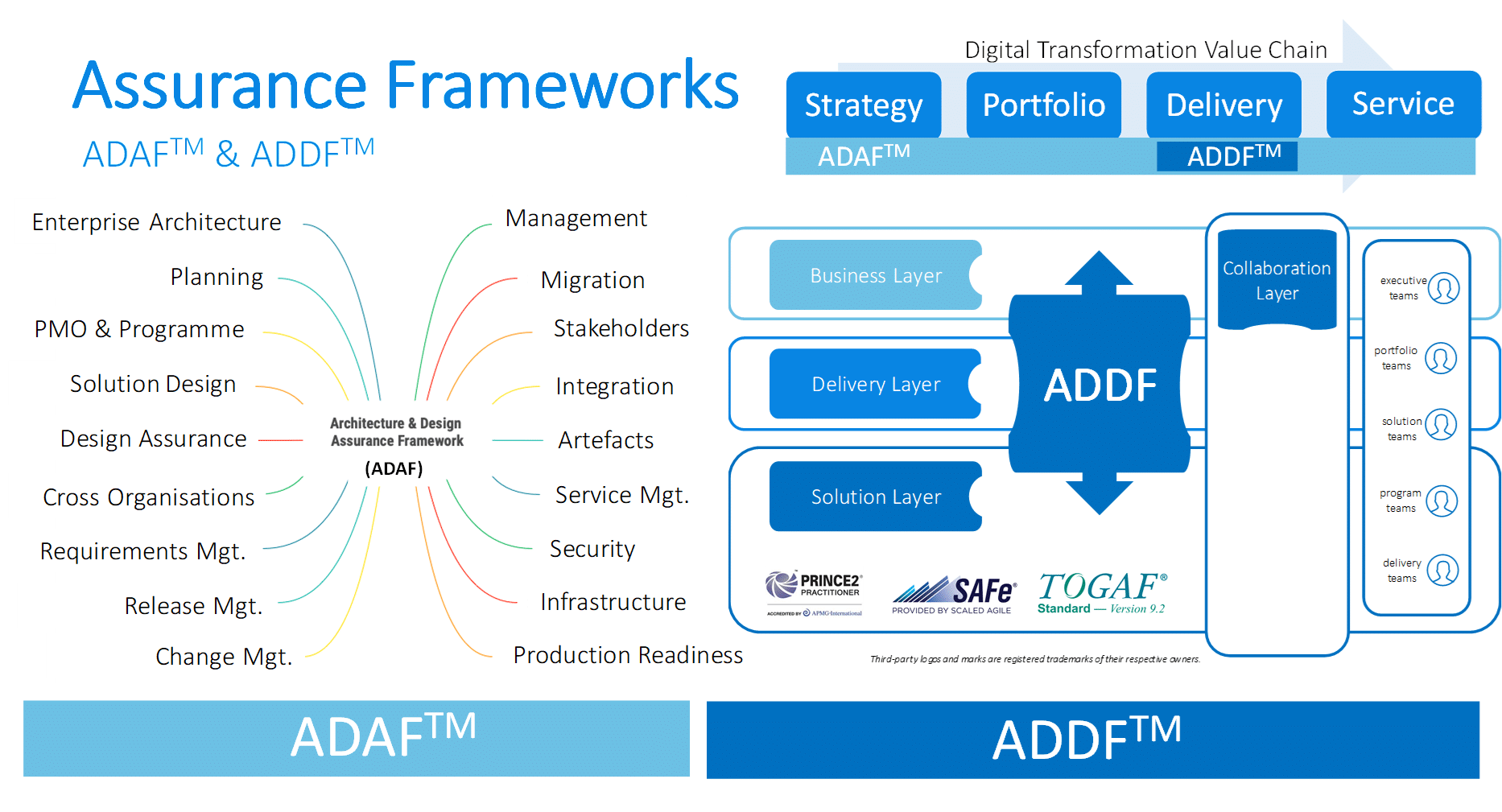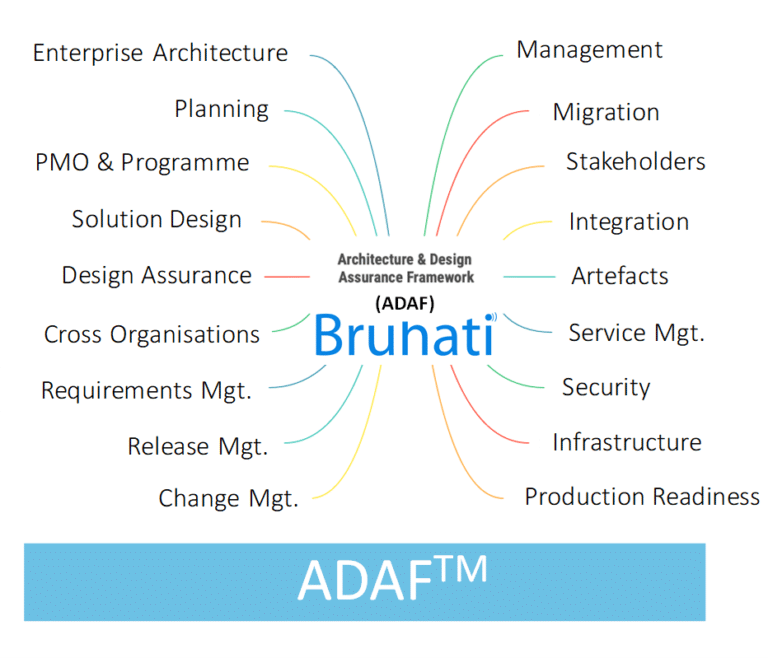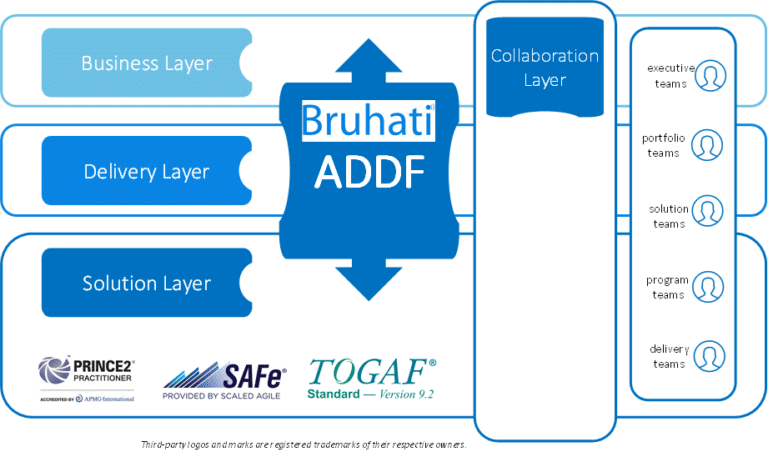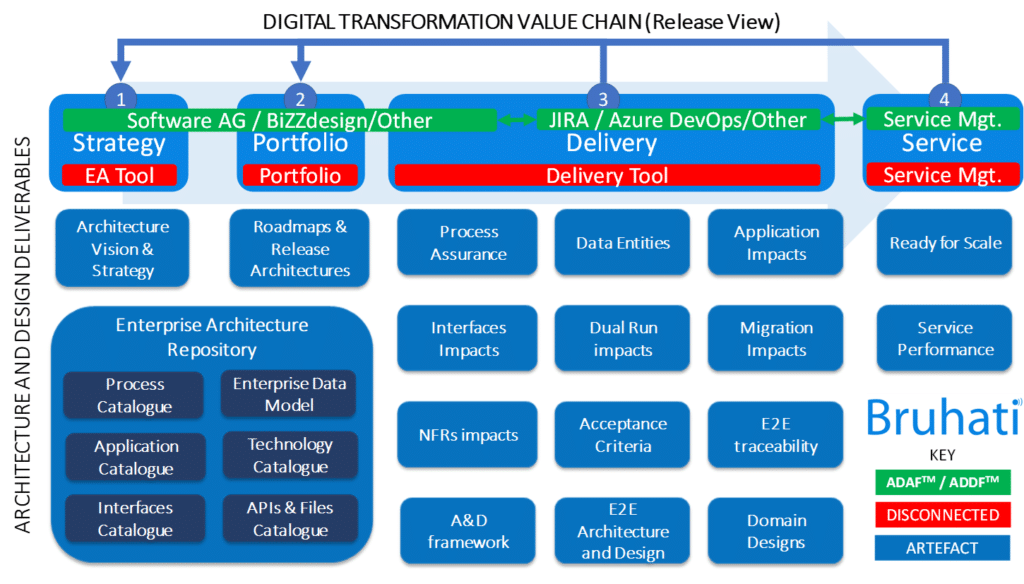Feel free to comment and subscribe to be notified when a new article is published.
Refer to © Scaled Agile Inc. for more details on the Scaled Agile Framework.

We discussed in a previous article, the impacts of Agile introduction on the Architecture team. Then we have analysed the Architecture and Design deliverables required to effectively govern a large Agile Transformation.
In this article, we’ll introduce two effective and mature Assurance Frameworks for Enterprise-level Digital Transformation.
Assurance, which is the continuous assessment of all aspects of the Programme performance is key to a successful Digital Transformation. Governance is the framework within which timely informed decisions are made. To achieve the Business Objectives, the Digital transformation Programmes must be assured by governance frameworks.
When multiple Organisations, Teams and Stakeholders (and business interests) are involved, assurance activities are needed to ensure effective governance, so the expected business objectives are met and the benefits are delivered.
To deliver effective transformation governance, an organisation needs two fundamental frameworks in place:
ADAFTM: Architecture and Design Assurance Framework
ADAF is Bruhati’s Architecture and Design Assurance Framework.
The Bruhati Architecture and Design Assurance Framework spans across the whole Digital Transformation Value Chain assuring that Architecture and Design team are involved in every aspect of the Transformation delivery lifecycle. The following assurance aspects should be considered for each of the delivery phases.

Strategy
Portfolio

Delivery
Service
ADDFTM: Architecture, Design and Delivery framework
Deployment of an Architecture and Design Framework tailored to the organisation is key to successful transformation. Such a framework must include the definition of tools, processes, templates, metamodel, and taxonomy that will be used to model, document and govern the Architecture and Design of the solution.

ADDF is a SIMPLE, COMPLETE and FLEXIBLE framework that is tool-agnostic, which can be tailored to the Digital Transformation needs and integrated with the existing tools of your organisation. There framework is organised in 3 interconnected layers.
Business Layer
The responsibility of the Business layer is to Define and Refine Business Objectives, Architecture and Processes. This layer can be implemented using Enterprise Architecture modelling tools like SoftwareAG ARIS or BiZZdesign HoriZZon.
Delivery Layer
The Delivery layer supports Business Executives and Programme managers for Programme Scope definition and Delivery Management. This layer can be implemented using Delivery tools like Atlassian Jira or Azure DevOps.
Solution Layer
In the solution layer, Solutions Architects can define and explore Strategic and Release Architecture and Designs. This layer offers a platform to be used to define both the planned and the emerging architectures. It can be used to drive the programme Architecture and Design activity as well as a Strategic Enterprise Architecture Repository. This layer can be implemented using Enterprise Architecture modelling tools like SoftwareAG Alfabet or BiZZdesign HoriZZon.
With the implementation of an effective Repository, the organisation can :

The picture above represents all the main Architecture and Design deliverables necessary to successfully deliver a Large Scale Digital Transformation. The green boxes in the picture, depict an example ADAF and ADDF deployment . The main difference between Bruhati’s frameworks implementation and legacy frameworks and tools is that Bruhati’s frameworks and tools are fully connected through a common metamodel and offer a seamless experience that implement best practice process, templates and tools..
For more details on ADAF and ADDF, attend the webinar on Agile Architecture for Digital Transformation (clicking on the banner below) and you’ll be able to watch a Demo implementation of these frameworks.
Feel free to comment and subscribe to be notified when a new article is published.
Refer to © Scaled Agile Inc. for more details on the Scaled Agile Framework.

